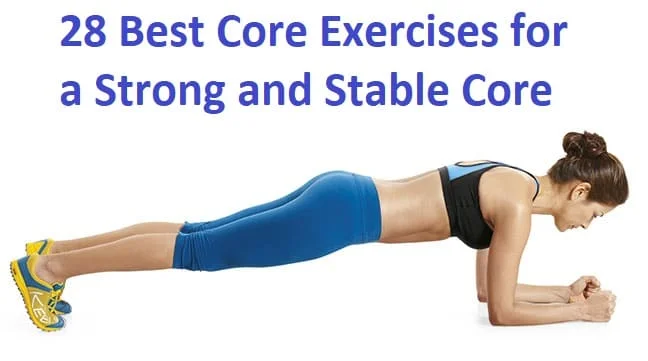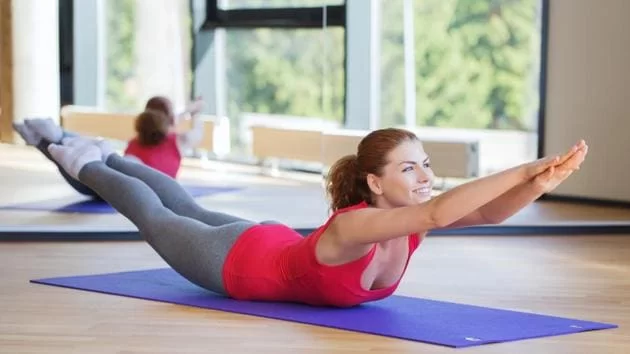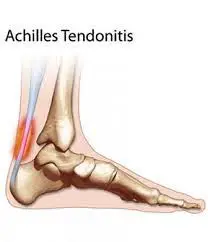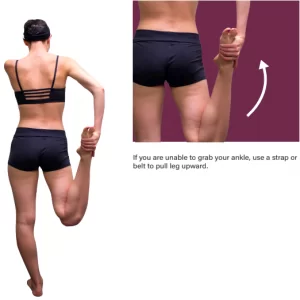28 Best Core Exercises for a Strong and Stable Core
Core exercises are an essential component of a well-rounded fitness routine. Your core, which includes muscles in your abdomen, lower back, and pelvis, plays a crucial role in stabilizing your body and supporting various movements.
By strengthening your core, you can improve your overall balance, posture, and functional fitness. Common core exercises include planks, crunches, leg raises, and bridges.
What are core muscles?
Core muscles are a group of muscles that are located in the torso or the trunk of the body. These muscles play a very important role in giving support to the spine and maintaining good posture. They also help to stabilize the body during movement and provide a strong foundation for the limbs to move from.
The core muscles include:
- Rectus abdominis: This is the muscle that runs down the front of the abdomen, from the ribcage to the pelvis. It is in charge of flexing the trunk and bending the spine in the forward direction.
- Transverse abdominis: This is a deep muscle that forms a corset-like band around the abdomen. It aids in keeping the pelvis and spine stable during moving.
- Internal obliques: These are muscles that run diagonally from the lower ribs to the pelvis. They help in rotating and bending the trunk.
- External obliques: These are muscles that run diagonally from the lower ribs to the pelvis but in the opposite direction to the internal obliques. They also help to rotate and bend the trunk.
- Multifidus: This is a group of small muscles that run along the length of the spine. They help to stabilize the spine and maintain good posture.
- Erector spinae: This is a group of muscles that run along either side of the spine, from the pelvis to the skull. They aid in maintaining proper posture and extending the spine.
- Diaphragm: This is a dome-shaped muscle that divides the chest cavity from the abdominal cavity. It plays a crucial role in breathing by contracting and relaxing to draw air into and out of the lungs.
Overall, strong core muscles are essential for good posture, balance, stability, and mobility. They also help to prevent back pain and injury by supporting the spine and reducing stress on the lower back.
Core muscle exercise
Bridging
This pose turns on your glutes to raise your hips, which helps in training your core muscles while getting the tone of your butt and thighs.
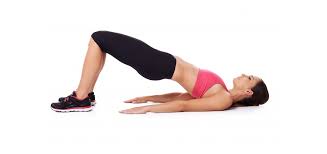
- Begin with lying on your back.
- Your knees should be bent and plant your feet on the ground at hip-width distance.
- Put your hands at your sides and your palms should be facing downward.
- Make sure you tighten your core and glute muscles.
- Lift your hips until your knees come in line with your shoulders.
- Maintain this pose for 10–30 seconds.
- Do it again for 3–5 times.
Supine toe tap
This is a fundamental Pilates workout. It works your glutes, hips, and legs while activating your core muscles.
Toe taps also create small pressure on your spine. If you feel back pain, toe taps may be the best optional activity for crunches.
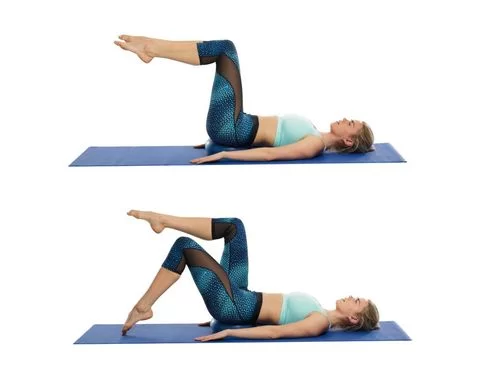
- Begin with lying on your back.
- Raise your legs, and your knees should be bent to ninety degrees.
- Put your hands at your sides.
- palms should be facing down.
- Your core muscle must be tightened.
- Lower your right foot and gradually tap the ground.
- maintain your left leg still and your back should be flat.
- Lift your right leg to come back to the beginning position.
- do it again with your left leg.
- Initiate with 1 set of 8–12 repetitions.
Bird Dog
The bird dog is a great exercise to build your core because it works your back and abdominal muscles. It also assesses your stability, balance, and coordination.
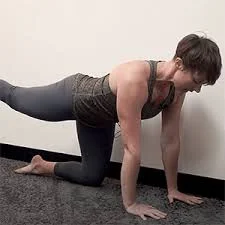
- Begin on all fours, hands placed below your shoulders, and knees should be below your hips.
- Your core must be tightened.
- Lift and extend your right leg to the level of your hips.
- Raise and extend your left arm to shoulder height while keeping your palm down.
- Maintain a neutral spine without permitting your back to arch as you perform an extension of your arm and leg.
- Maintain this pose for a few seconds.
- Do it again with your left leg and right arm.
- Begin with 1 set of 8–12 repetitions.
Crunch
Crunches are a traditional method to improve your core. The core muscles are worked out as you raise your upper body.
If you feel occasional low back pain, perform crunches with care, move gradually, and begin with just a few repetitions. If you feel chronic low back pain, take advice from a certified trainer or healthcare practitioner before doing this classic crunch. It may not be the best option open to you.

- Begin with lying on your back.
- Your knees should be bent and plant your feet on the ground at hip-width distance.
- Your head and spine must be in line.
- Fold your arms over your head
- Your core muscles should be tightened and your neck and shoulder muscles should be relaxed.
- Maintaining your lower back, pelvis, and feet on the floor, tuck your chin in and raise your upper back.
- Maintain this pose for a few seconds.
- Gradually lower your upper back to come back to the initiate position.
- Begin with 1 set of 8–12 repetitions.
Bicycle crunch
This variation on a regular crunch works your on obliques, rectus abdominous, and hip muscles.
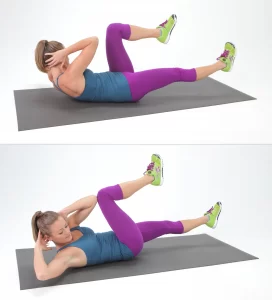
- Begin with lying on your back on the ground, and your left knee should be bent and drawn in the direction of your chest.
- Maintain your right leg straight and a little raised off the ground.
- Put your hands behind your neck or the decreased part of your head.
- be careful not to pull on your neck while you performing this movement.
- Your right leg should be straight and your left knee must be bent.
- Raise your right shoulder off the ground and move your right elbow in the direction of your left knee.
- As you bring your right shoulder return to the ground, do an extension of your left leg while bending your right knee, and take it toward your chest.
- As your right knee moves farther in, raise your left shoulder off the ground and move your left elbow in the direction of your right knee.
- Begin with 3 sets of 12 alternate repetitions.
Plank
The plank is a full-body exercise that focuses on your core. It also helps in strengthening your arms, shoulders, back, glutes, and leg muscles.

- Begin on all fours, and your hands should be below your shoulders and your knees should be below your hips.
- Maintaining your feet hip-width apart, straighten your legs behind you. Tighten your core.
- Lift your body in order for your neck, spine, and glutes to form a straight line.
- Maintain it for 10–30 seconds.
- Do it again for 3–5 times.
- In order to make this exercise easier, keep your knees on the ground, with your body weight over your hands. From your legs to your shoulders, keep a straight posture.
Warrior crunch
This crunch variation targets your core and lower body, involving your thighs, glutes, and quad muscles.
- Start with standing with your feet a little wider than shoulder width and your toes rotated outward.
- Place your hands behind your head and your chest should be open.
- Your core and glutes must be tightened.
- Bend your knees until your thighs come parallel to the ground.
- Tilt your torso to the side, moving your right elbow in the direction of your right thigh.
- Do it again on the left side.
- Begin with 1 set of 8–12 repetitions.
Bird dog with elbow-to-knee
This modification on the classic bird dog works your back and abs while increasing core mobility by using its fluid motions.
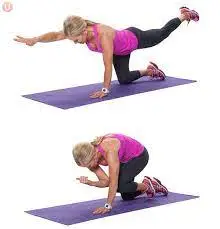
- Begin with on all fours, hands should be below your shoulders and knees should be below your hips.
- Your core muscle must be tightened.
- Raise and straighten your right leg up to hip level.
- Simultaneously raise and do an extension of your left arm to shoulder level.
- palm should be facing down.
- Take your right knee and left elbow toward each other.
- Get back to the initiate position.
- Begin with 1 set of 8–12 repetitions.
- Do it again on the other side.
Mountain climber
This intermediate workout is a great way to strengthen your core and balance as it mixes planking with knee motions.
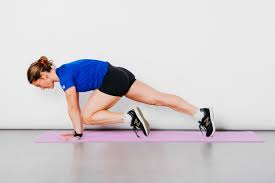
- Begin with a plank with your hands should be below your shoulders.
- Your core muscle must be tightened.
- Raise your right knee in the direction of your chest, maintain your back straight and hips should be down.
- Get back your right leg to the initiate position as you simultaneously raise your left knee in the direction of your chest.
- Continue simultaneously changing legs.
- Begin with 1 set of 8–12 repetitions.
Side plank with rotation
This is a more difficult variant of the basic plank that works your arms, shoulders, and obliques by mixing arm motions with a side plank.
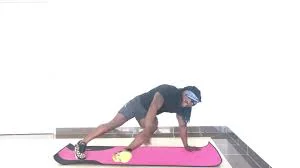
- Start with lying on your right side with your right forearm should be below your shoulder.
- Do an Extension of your legs, the left foot should be on top of the right.
- Your core muscle must be tightened.
- To make a straight line with your body, lift your hips.
- Lift your left arm straight up.
- Turn your torso in the direction of the ground and take your left arm under your body.
- To straighten your left arm and get back to the beginning position, rotate your torso once more.
- Begin with 1 set of 8–12 repetitions.
- Do it again on the other side.
Turkish get-up
This full-body exercise is an excellent method to enhance hip, lumbar, and thoracic spine mobility in addition to strengthening your spine. It is also excellent for strengthening the shoulder and abdominal muscles that surround your spine.
Perform this movement once or twice without taking weight, and then do it with something light (around 5 pounds) to make sure your shoulders are stable enough to handle weight overhead. You can use a heavier weight as you increase strength.
- Start with lying on your back with your legs should be straight out and your arms should be at your sides at about a forty-five-degree angle.
- Your right leg should be bent and put your right foot on the ground, a few inches from your glutes.
- take your right arm straight up toward the ceiling, create a fist with your right hand, and maintain your knuckles pointing in the direction of the ceiling (this helps in shoulder stabilization).
- Keep your eyes fixed on your fist since that’s where the weight will ultimately land. For the duration of the action, you should maintain your fist directly over your shoulder.
- After that push with your right heel and your left should be elbow to prop yourself up onto your left elbow.
- Make sure your chest is facing out in front of you, not up in the direction of the sky.
- After that push your left palm into the ground and pull your body into a seated position, permitting your abs to do most of the work.
- Next, slide your left leg beneath you, and ensure your left knee and left ankle are in line with your left hand.
- Move into a kneeling position with your left knee and right foot on the floor, removing your left hand from the ground as you do so.
- As you continue to maintain your right arm overhead, press your right foot into the floor and take your left leg forward like you are doing a lunge.
- You should now be standing.
- Continue the motions backward until your back contacts the ground once more.
- Start with 3–5 reps.
Dead Bug
The dead bug exercise is a popular core exercise that targets the rectus abdominis, transverse abdominis, and hip flexors. in order to do the dead bug exercise, follow the below steps:
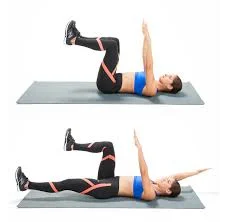
- Start with lying faceup with your arms should be in extension toward the ceiling and your legs in a tabletop position
- knees must be bent ninety degrees and stacked over your hips.
- This is an initiate position.
- Do gradually extension of your right leg straight, while simultaneously lowering your left arm overhead.
- maintain both a few inches from the ground.
- Compress your glutes and maintain your core engaged during the whole exercise.
- Lower back pressed into the ground.
- Take your arm and leg back to the initiate position.
- Do it again on the other side, extension of your left leg and your right arm.
Glute Bridge March
The glute bridge march is a great exercise for strengthening the core, glutes, and hip flexors. To perform the glute bridge march, follow these steps:
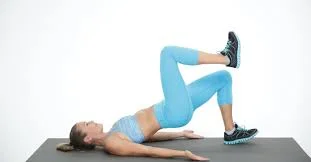
- Start with lying on your back and your legs should be bent, heels should be under your knees, and feet must be flat on the ground.
- Do extend your arms over your chest, palms should be facing downward.
- Raise your hips so that your torso from your shoulders to your knees forms a straight line.
- Maintaining the 90-degree angle of your right leg, raise your right knee over your hip while stabilizing your abs.
- Maintain it for a moment, then decrease your right foot.
- Do it again with the left.
- That is 1 repitation.
- Make sure you complete 12 repetitions.
Inchworm
This is a full-body, bodyweight exercise that works the arms, upper back, core, and legs while also building flexibility. You get a lot of bang for your buck as you have to use your core to bend over and walk out into a high plank posture and back.
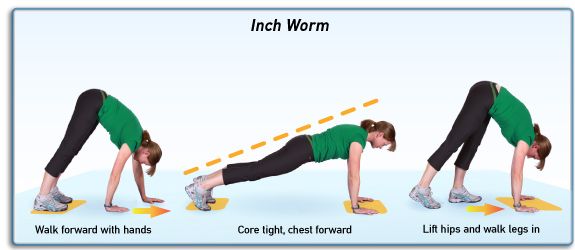
- Begin with standing with your feet hip-width distance.
- Gradually bend over and touch the ground in front of your feet with the use of both hands.
- Maintain your legs as straight as possible and the core should be tight.
- Move your hands forward while keeping your hips up until you are in a high plank position.
- Hold this position for a few seconds.
- Then gradually walk your feet toward your hands.
- That is 1 repitation.
- Make sure you complete 10 repetitions.
V-Sit Pose
Working the rectus abdominis, external obliques, and internal obliques, the V-sit is a great abdominal workout. It activates the hip flexors as well.
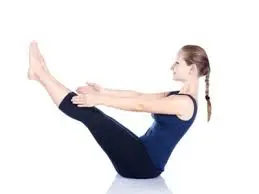
- To do the V-sit,
- Start with the seated position on the ground.
- Do inhalation gradually, and contract your abdominal muscles while raising your legs to a forty-five-degree angle.
- If you feel less stable, put your hands by your sides or reach forward to regain stability.
- Keep this position for fifteen to sixty seconds.
- Relax for 15 to 20 seconds and do it again two more times.
- As you build strength, raise the duration of this pose.
Bear Crawl
During this exercise, your spine, hips, and shoulders need to stay balanced, thus your core muscles must really work hard as you are crawling on all fours and hovering over the ground. The bear crawl, which stimulates your entire body, is also an excellent warm-up or finisher exercise.
How to:
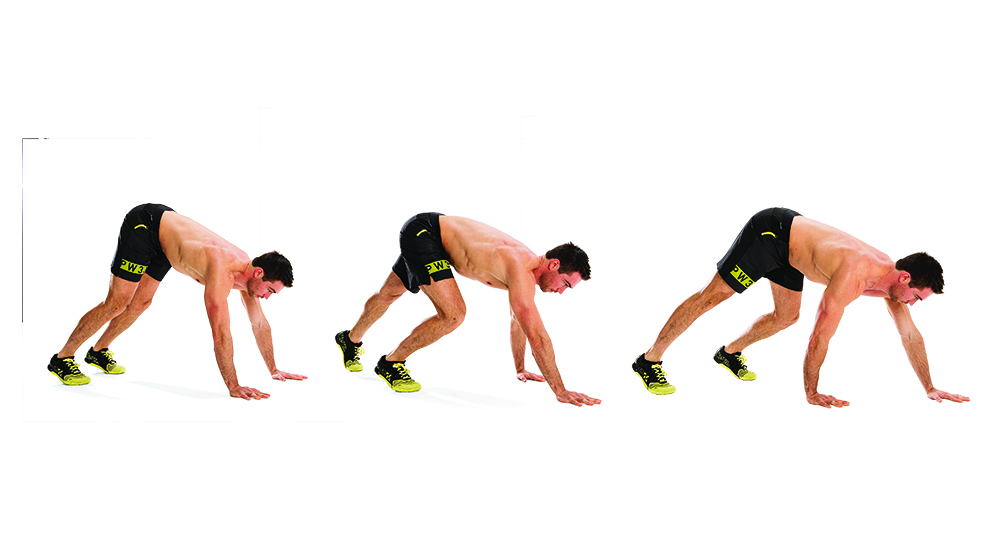
- Initiate with a tabletop position at the back of your mat your wrists should be under your shoulders, your knees under your hips, and your neck should be aligned with your spine.
- Maintain a little bend in your elbows.
- Lift your hips a little to raise your knees off the ground while keeping a flat back.
- Step forward with your hands and feet gradually until you reach the top of the mat, then step backward.
- That is 1 repitation.
- Make sure you complete 12 repetitions.
Single-Arm Floor Press Deadbug
Because you are pressing with your single arm, your body and core must resist the desire to twist, which activates your core more, making this action more demanding on your balance and stability.
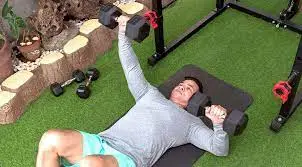
- Start with lying on your back with your legs bent (such as knees over hips) and arms should be extended at chest height.
- Keep a dumbbell in your left hand, your palm should be facing away from you.
- Press your lower back to the mat and brace your core.
- That is your beginning position.
- Bend your left arm till it makes a 45-degree angle with the floor, and gradually but simultaneously extend and lower your right leg until your heel almost reaches the ground.
- from your body.
- Maintain this position for a few seconds then go back to starting position.
- That is 1 repitation.
- Make sure you complete 10 repetitions on each side.
Kettlebell Bridge Pullover
This exercise helps in increasing the strength of the anterior core and glute muscles, and because of its eccentric nature, it gives a lot of time under tension. It also makes sure that your hamstrings, glutes, and abs muscles work together.
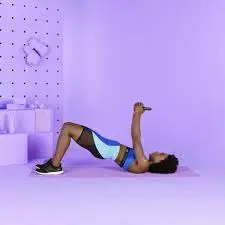
- Start with lying on your back with your knees should be bent and your feet should be flat on the ground.
- Grasp a kettlebell in both hands, resting on top of your chest.
- Raise your hips so that your torso from your shoulders to your knees forms a straight line.
- Raise the kettlebell into the air over your chest.
- After that gradually lower it back side of you until it nearly touches the floor without forming arching your back or splaying your rib cage.
- Engage your core and get back the kettlebell over your chest.
- That is 1 repitation.
- Make sure you complete eight repetitions.
Kettlebell Deadbug Pullover
The kettlebell deadbug pullover adds a load when you’re ready to move up from the standard deadbug. It helps to maintain a neutral spine and prevent rotation by strengthening the muscles in the abdomen.
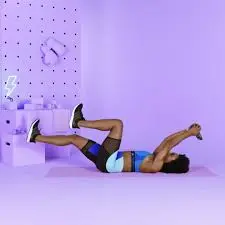
- Start with lying on your back with your legs bent at ninety degrees, knees should be over hips.
- Your arms must be in extension over your chest keeping a kettlebell with both hands.
- That is your beginning position.
- Press low back into the ground, and brace your core.
- Then, while lowering the kettlebell overhead till it almost reaches the floor behind you, slowly and simultaneously extend and drop your right leg until your heel almost hits the ground.
- Maintain this pose for a few seconds.
- Then go back to the initiate position and do it again on the opposite side.
- That is 1 repitation.
- Make sure you complete eight repetitions.
Stability Ball Deadbug
According to Kendter, you can engage your abs while also improving your spine and core stability by adding a stability ball to your deadbug. It appears easier than it is.
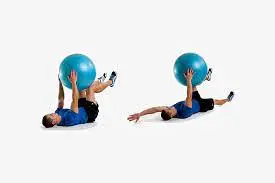
- Start with laying on your back and your legs should be bent at ninety degrees and arms should be extended over your chest.
- maintain a stability ball in between your forearms and knees.
- Press low back into the mat, and brace your core.
- Then gradually and simultaneously extend and lower your right leg until your heel nearly comes in contact with the ground.
- your left arm should be overhead until your hand nearly comes in contact with the ground behind you.
- Maintain this position for a few seconds.
- Then get back both knee and forearm to the stability ball and do it again on the opposite side.
- That is 1 repitation.
- Make sure you complete 10 reps.
Stability Ball Stir The Pot
Searching for a more complex core move? Try it out; stirring the pot on a stability ball challenges your abdominal stability as you maintain your forearms in a plank posture and spin, which strengthens your core muscles.
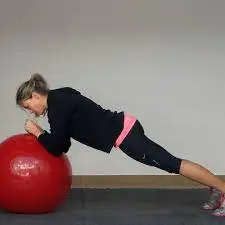
- Start by placing your forearms on a stability ball and extend your legs directly back side of you into a high plank position.
- Your body needs to be in a straight line down your head down to your heels.
- To make the stability ball move along with you while the rest of your body remains motionless, tighten your abs and move your forearms in a complete circle.
- That is 1 repitation.
- Do 10 repitations then reverse the circle for 10 reps.
Unilateral Dumbbell March
By adding an offset weight to the center of your body, you may focus on developing your grip strength, upper body strength, and general agility in addition to strengthening your core stability.
- Start with standing up straight, and your feet should be shoulder-width distance.
- Keep a dumbbell in your left hand and do an extension of your right arm out to your side at a 45-degree angle from your body.
- Gradually raise your left leg up until your knee is at hip level.
- after that, with control, lower your leg down to the ground.
- Do it again on the other side.
- That is 1 repitation.
- Make sure you complete 10 repetitions,
- Change hands with the dumbbell, and perform another 10 repetitions.
Kettlebell Goblet Squat
The weight in front of your chest requires your core to work more in order to maintain stability and balance, which makes this exercise essential for strengthening your core. It also works your lower body.
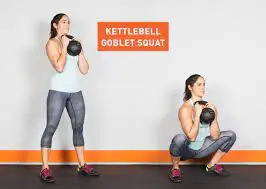
- Grasp a kettlebell in front of you, your toes pointing slightly outward and your feet somewhat wider than hip-width wide.
- Hold the weight just below your chin, press your elbows towards your ribs, and hold the kettlebell with the horn facing up.
- Engage your core and maintain your arms near your chest and elbows should be pointing down as you bend your hips and knees.
- Squat down as low as you can.
- Maintain this position for two seconds.
- Then drive through your glutes, legs, and heels to stand back up to the initiate position.
- That is 1 repitation.
- Make sure you complete 10 repetitions.
Russian Twist
This exercise rocks your core since it works your rectus abdominis or the muscles we usually identify with a six-pack, as well as your obliques, which are frequently overlooked in classic ab exercises.
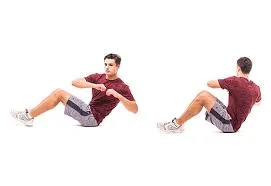
- Start with lying on the ground with your knees should be bent and your feet should be flat on the ground.
- Lean back slightly and raise your feet off the floor a few inches, balancing on your sit bones.
- Maintain a weight in front of your chest and turn your torso to one side.
- Before turning to the other side, tap the weight on the surface of the floor beside your hip.
- That is 1 repitation.
- Make sure you complete 12 repetitions on each side.
Incline Mountain Climbers
Because it works your abs and obliques to stabilize your body while you move your legs, this exercise is excellent for strengthening your core. Also, you may perform this exercise against a wall to target your hips and abs even more if you do not have access to a bench or chair.
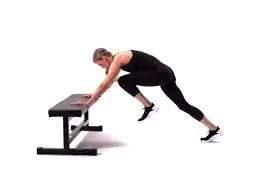
- Begin in a high plank position with your hands should be on a bench, step, chair, or wall.
- Take one knee up toward your chest, then gradually take your leg back down.
- Focus on control and maintain your tailbone stable at the top of the motion.
- Do it again on the opposite leg while maintaining your core engaged the whole time.
- That is 1 repitation.
- Make sure you complete 12 repetitions on each side.
Leg Lowers
This exercise works your hips and rectus abdominus, or six-pack, which is excellent for your core. This exercise can also help you have greater flexibility in your hips because it requires you to keep your legs straight while lowering and raising them.
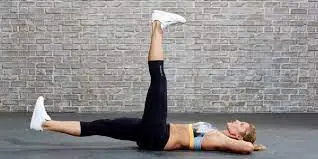
- Start with lying on your back and your legs should be extended and your arms should be at your sides.
- Raise one leg straight up in the direction of the ceiling.
- Gradually decrease that leg toward the ground while engaging your lower abs and maintaining your lower back flat to the ground.
- Place your legs back up to the initiate position.
- Do the same with another leg.
- That is 1 repetition.
- Make sure you complete 12 repetitions on each side.
Turkish Get-up with a kettlebell
Turkish get-ups demand core stability and control during the whole exercise, making them extremely taxing on the body. Enhancing your upper and lower body strength and stability is another fantastic benefit of this exercise.
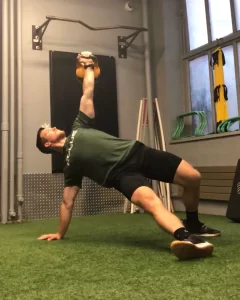
- Start with lying on your back with a kettlebell in your right hand placing in front of your shoulder.
- Bend your right leg, and put your foot flat on the ground.
- Stretch out your left arm and leg to the side at a forty-five-degree angle.
- Maintains a good grip on the handle and presses the weight up in the direction of the ceiling.
- lock out the elbow completely and maintain a gaze on the kettlebell.
- Maintain eyes still on the bell overhead, and lift onto the left forearm.
- To sit up, then press against the left hand’s palm.
- Engage abs, then push with the right heel and squeeze glutes to raise hips until the right thigh is come parallel to the ground.
- Raise your torso and smoothly slide your left leg behind you, with your toes pointed toward the back-right corner.
- Raise your torso into a half-kneeling lunge by swiveling your left shin to the left so that the foot is immediately behind the body.
- Keep your core taut and place your feet hip-width apart while driving into your right heel to stand.
- Gradually and with control, turn back the move back to the initiate position.
- That is 1 repitation.
- Make sure you complete 3 to 5 repetitions on each side.
Squat To Oblique Twist
Due to the reason that it strengthens your glutes, quads, and core muscles, this exercise is excellent for your core. Your lower body is worked during a squat, while your hip flexors and obliques are worked during a knee drive, which enhances stability and balance. From there, the twisting motion tests the coordination of your obliques and core muscles, enhancing your overall core strength.
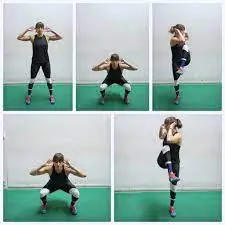
- Begin with standing with your feet shoulder-width distance and your hands slightly touching the back of your ears.
- Maintaining an upright chest and a proper weight distribution between your toes and heels is important while lowering your body into a squat position.
- In order to stand back up, push through your feet. Then, force one knee up and over your chest, twist your body, and bring your opposing elbow to that knee.
- Take your knee back downward and go back to the beginning position.
- That is 1 repitation.
- Do 12 repetitions on each side.
Benefits of core muscle exercise
The Benefits of a Strong Core
Injury Prevention
Reduces Back Pain
Improved Balance and Stability
Improved Posture
Improved Lifting efficiency
Athletic Performance
- Injury Prevention
One of the most essential benefits of a strong core is injury prevention. These injuries can be a result of everyday tasks like taking out the garbage, shoveling the snow, or reaching into the bottom cabinet to look for that rarely utilized pot. Maintaining a strong core can help in avoiding all types of injuries, including strained muscles, sprained joints, protruding disks, and even broken or bruised bones. - Reduces Back Pain
Having strong core muscles forms a system to provide support for your spine. Daily movements like household chores can cause back pain if this support system can not fulfill the requirements of those activities. If your core muscles are weak, tasks like vacuuming, cleaning the dishes, mowing the lawn, raking leaves and even gardening might exacerbate your back pain. A powerful core can significantly avoid or reduce back discomfort in daily life, no matter the cause of the pain such as old injuries, repeated motions at work, abnormal sleeping patterns, or even just a bad night’s sleep. - Improved Balance and Stability
Having perfect balance and stability is crucial in daily life. Your balance and stability are frequently put to challenge whether climbing stairs, putting on clothes or crossing ice or slippery areas. With strong core muscles, you can prevent injuries from falls and slips and tackle life’s challenges from an angle of stability and security - Improved Posture
“Stop hunching over!” It’s likely that you have heard this at some point in your life. Weak muscles are the cause of bad posture, particularly in the core. Consider your body as a collection of pennies. The more out of alignment they are, the more strain there is on them to stay upright; the more uniformly stacked they are, the less tension there is, and the higher their chances of staying upright. By preserving the natural curvature of the spine and the neutral alignment of the pelvis, strengthening the core muscles helps to improve posture. Your body is in alignment and the stress on supporting tissues like muscles, ligaments, and disks is reduced when you have a strong core to support proper posture. Good posture even makes for easy breathing during exertion. With better posture, the lungs have more space to expand and accurate breathing mechanics result in better core stability. - Improved Lifting Efficiency
Not only should we lift during our workouts, but we also lift more in our daily lives, whether it’s groceries, kids, dogs, or deliveries from Amazon. The core gives the spine stability when lifting objects, preventing the muscles, ligaments, and disks from being overly stressed. Strong core muscles allow more effective item lifting and lower the chance of damage. - Athletic Performance
If you play any recreational sport, having a strong core will help you in performing at your peak time. Running, jumping, kicking, and dancing are examples of athletic activities that require the transfer of energy through the core between the upper and lower bodies. Consider kickboxing as an example. Your lower body should produce the majority of the force used in a jab. You can effectively transfer energy from your lower body to your upper body when your core muscles are strong.
FAQ
What are core exercises?
Core exercises are exercises that target the muscles of the abdomen, back, and pelvis, which provide stability and support for the spine.
Why are core exercises important?
Core exercises can help improve posture, balance, and stability, and reduce the risk of injury to the back and spine.
What are some examples of core exercises?
Examples of core exercises include planks, crunches, Russian twists, and bird dogs.
How often should I do core exercises?
It is recommended to do core exercises at least 2-3 times per week, with rest days in between.
Can I do core exercises if I have a back injury?
It is important to consult with a healthcare professional before starting any exercise program if you have a back injury. They can advise you on the safest and most suitable exercises for your condition.
Can I do core exercises if I am pregnant?
It is important to consult with a healthcare provider before starting any exercise program if you are pregnant. They can provide guidance on which exercises are safe and appropriate for your stage of pregnancy.
Can I do core exercises if I have a weak core?
Yes, core exercises can help strengthen the muscles of the abdomen, back, and pelvis, even if they are currently weak. It is important to start with easier exercises and gradually increase difficulty as strength improves.
References
- Nunez, K. (2023, March 16). The Best Core Exercises for All Fitness Levels. Healthline. https://www.healthline.com/health/best-core-exercises#beginner
- Shiffer, E., & Breitowich, A. (2023, October 9). 20 Hard Core Exercises That Aren’t Crunches For Stronger, Sculpted Abs. Women’s Health. https://www.womenshealthmag.com/fitness/a20702505/core-workout-routine/
- Ms, E. Q. (2022, September 21). 20-Minute Core Workout. Verywell Fit. https://www.verywellfit.com/quick-core-workout-routine-3120075
- 6 Benefits Of A Strong Core In Everyday Life | MIRROR. (n.d.). https://mirror.co/reflections/posts/benefits-strong-core/
- Image: Rehabilitator, S. (2017, July 28). Kettlebell Goblet Squat. G4 Physiotherapy & Fitness. https://www.g4physio.co.uk/blog/kettlebell-exercises/kettlebell-goblet-squat/kettlebell-goblet-squat/
- Image: Steele, H. (2020, July 26). Incline Mountain Climber. SHOCK: Women’s Fitness. https://shockfitapp.com/blogs/exercises/incline-mountain-climber
- Image: Chernova, A. (2017, July 25). Leg Lowers Workout of the Day Featured Exercise. Spartan Race. https://www.spartan.com/blogs/unbreakable-training/leg-lowers-workout-of-the-day-featured-exercise
- Image: Dewar, M. (2023, August 8). Turkish Get Up Exercise Guide. BarBend. https://barbend.com/turkish-get-up/
- Image: Lefkowith, C. (2017, December 16). Squat with Oblique Twist. Redefining Strength. https://redefiningstrength.com/squat-oblique-twist/
- Image: L. (2014, October 17). Stir the Pot on an Exercise Ball. Golf Loopy – Play Your Golf Like a Champion. http://www.golfloopy.com/stir-pot-exercise-ball/
- Image: Dead Bug – Strengthen Your Core With This Amazing Exercise. (n.d.). DMoose. https://www.dmoose.com/blogs/training/how-dead-bug-exercise-strengthen-core
- Image: Dead Bug – Strengthen Your Core With This Amazing Exercise. (n.d.). DMoose. https://www.dmoose.com/blogs/training/how-dead-bug-exercise-strengthen-core
- Image: Cpt, C. F. (2019, February 22). How To Do Bird Dog Crunch – Get Healthy U. Get Healthy U | Chris Freytag. https://gethealthyu.com/exercise/bird-dog-crunch/
- Image: Digital, T. N. (2018, July 5). Is V-sit ab exercise the best workout to lose belly fat? (WATCH). Times Now. https://www.timesnownews.com/health/article/weight-loss-v-sit-abdominal-exercise-for-a-flat-belly-best-ab-workouts-for-women/249523
- Image: McLean, S. (2023, May 15). Why The Unilateral Dumbbell Floor Press Will Maximize Your Pressing Strength. Muscle & Fitness. https://www.muscleandfitness.com/workouts/full-body-exercises/unilateral-dumbbell-floor-press-how-to-benefits/
- Image: Shiffer, E., & Breitowich, A. (2023, October 9). 20 Hard Core Exercises That Aren’t Crunches For Stronger, Sculpted Abs. Women’s Health. https://www.womenshealthmag.com/fitness/a20702505/core-workout-routine/

